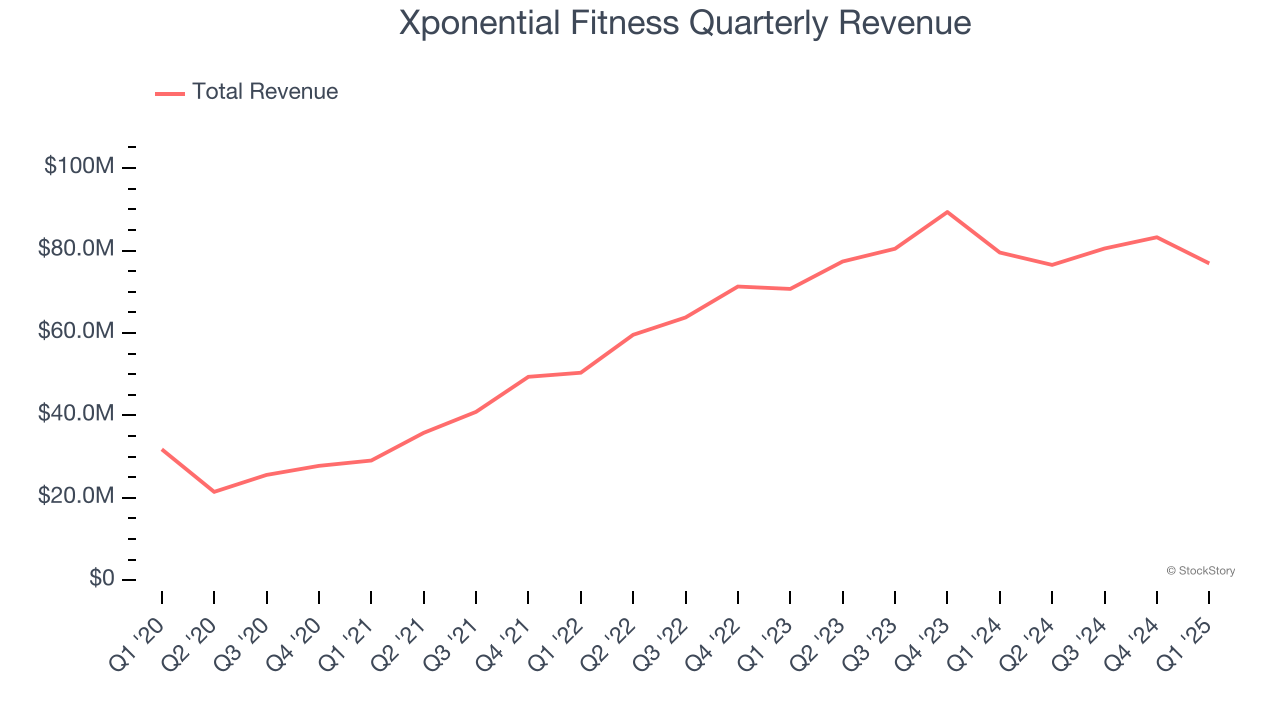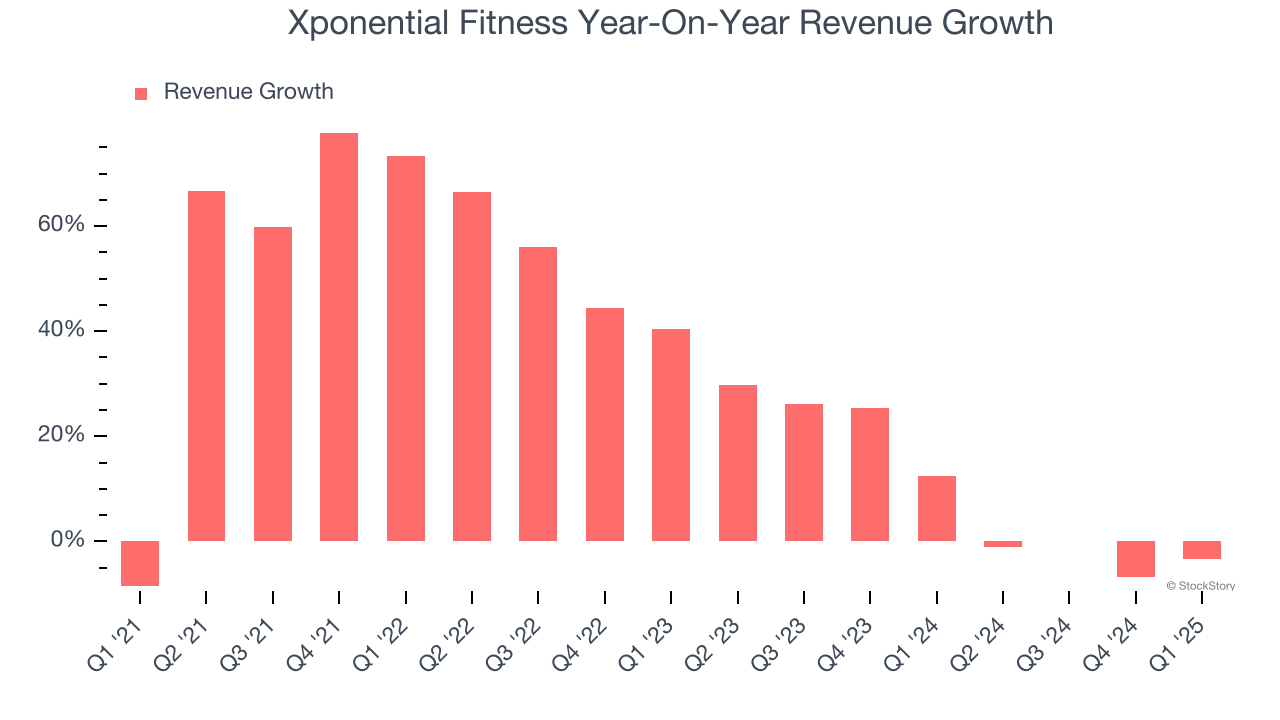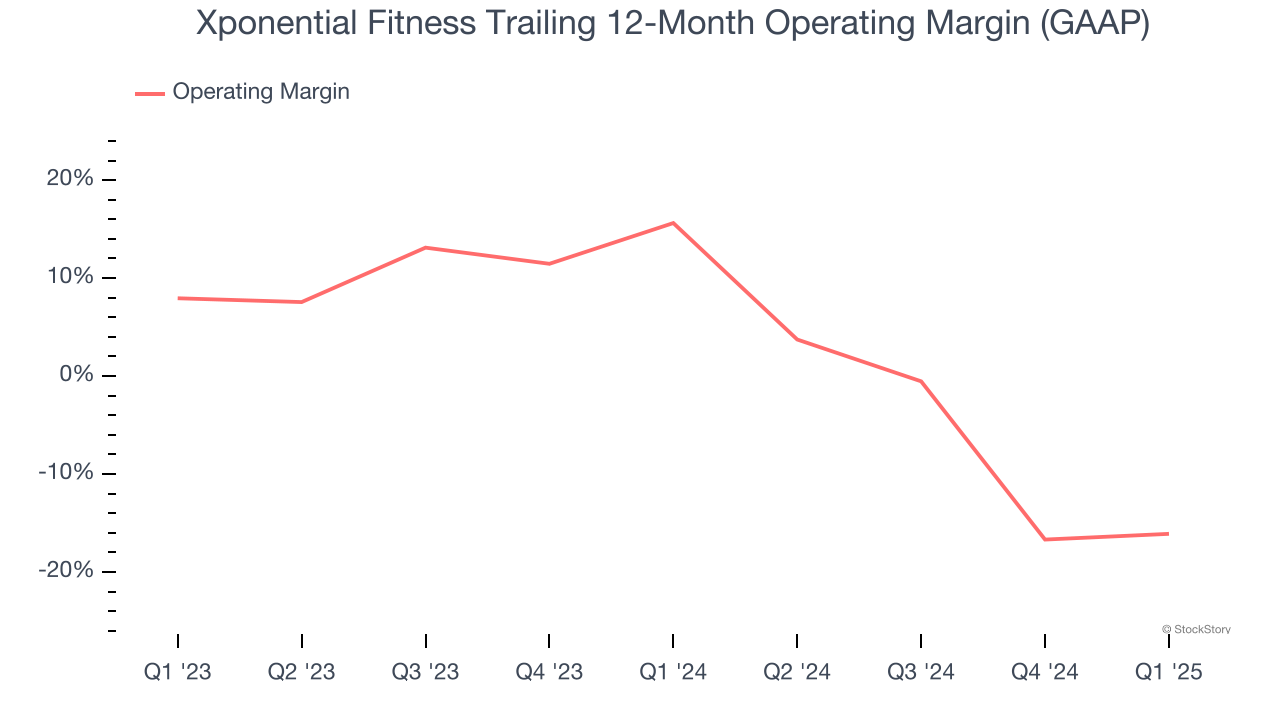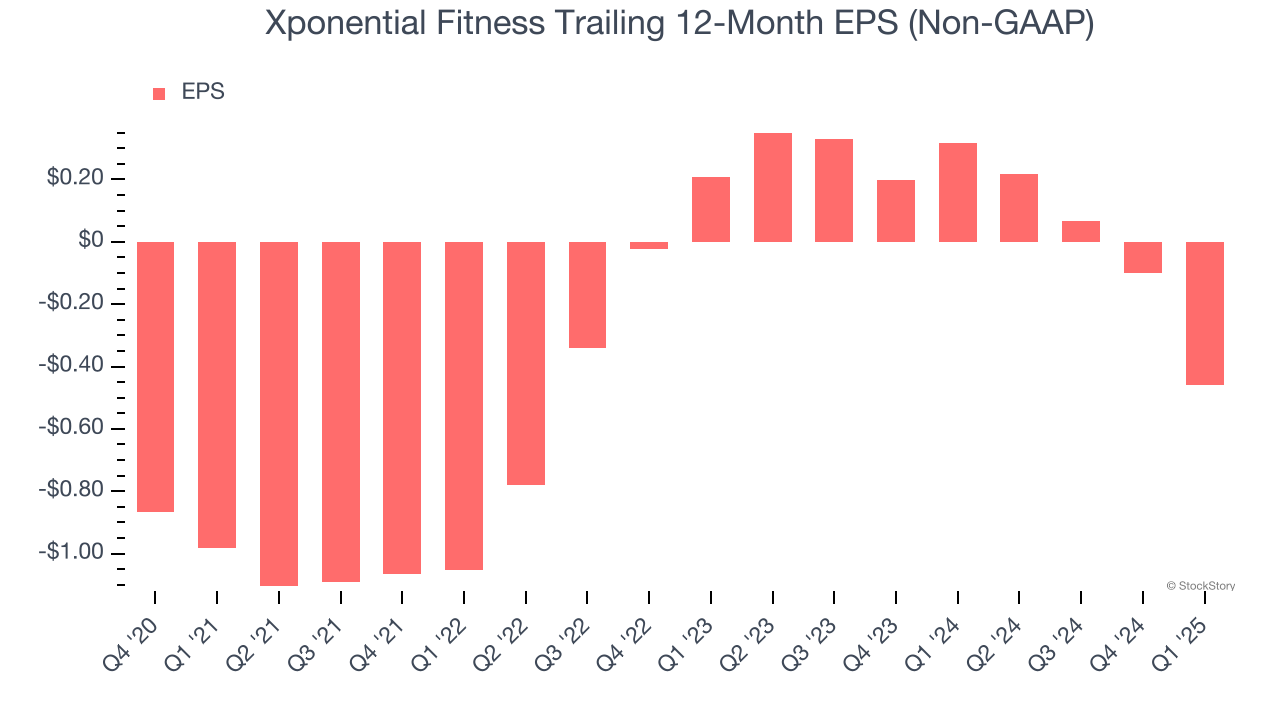
Boutique fitness studio franchisor Xponential Fitness (NYSE:XPOF) reported Q1 CY2025 results exceeding the market’s revenue expectations, but sales fell by 3.3% year on year to $76.88 million. The company expects the full year’s revenue to be around $320 million, close to analysts’ estimates. Its non-GAAP loss of $0.20 per share was significantly below analysts’ consensus estimates.
Is now the time to buy Xponential Fitness? Find out by accessing our full research report, it’s free.
Xponential Fitness (XPOF) Q1 CY2025 Highlights:
- Revenue: $76.88 million vs analyst estimates of $76.09 million (3.3% year-on-year decline, 1% beat)
- Adjusted EPS: -$0.20 vs analyst estimates of $0.15 (significant miss)
- Adjusted EBITDA: $27.33 million vs analyst estimates of $28.86 million (35.5% margin, 5.3% miss)
- The company reconfirmed its revenue guidance for the full year of $320 million at the midpoint
- EBITDA guidance for the full year is $122.5 million at the midpoint, in line with analyst expectations
- Operating Margin: 12.6%, up from 9.3% in the same quarter last year
- Free Cash Flow Margin: 7%, up from 2.3% in the same quarter last year
- Market Capitalization: $293.9 million
Company Overview
Owner of CycleBar, Rumble, and Club Pilates, Xponential Fitness (NYSE:XPOF) is a boutique fitness brand offering diverse and specialized exercise experiences.
Sales Growth
Examining a company’s long-term performance can provide clues about its quality. Any business can put up a good quarter or two, but the best consistently grow over the long haul. Thankfully, Xponential Fitness’s 32.2% annualized revenue growth over the last four years was incredible. Its growth beat the average consumer discretionary company and shows its offerings resonate with customers.

Long-term growth is the most important, but within consumer discretionary, product cycles are short and revenue can be hit-driven due to rapidly changing trends and consumer preferences. Xponential Fitness’s recent performance shows its demand has slowed significantly as its annualized revenue growth of 9.3% over the last two years was well below its four-year trend. Note that COVID hurt Xponential Fitness’s business in 2020 and part of 2021, and it bounced back in a big way thereafter. 
Xponential Fitness also breaks out the revenue for its three most important segments: Franchise, Equipment, and Merchandise, which are 57.1%, 14.4%, and 8.1% of revenue. Over the last two years, Xponential Fitness’s Franchise (royalty fees) and Equipment (workout equipment sold to franchisees) revenues averaged year-on-year growth of 20.3% and 4.4% while its Merchandise revenue (apparel sold to franchisees) averaged 2.6% declines.
This quarter, Xponential Fitness’s revenue fell by 3.3% year on year to $76.88 million but beat Wall Street’s estimates by 1%.
Looking ahead, sell-side analysts expect revenue to grow 2.9% over the next 12 months, a deceleration versus the last two years. This projection doesn't excite us and indicates its products and services will face some demand challenges.
Today’s young investors won’t have read the timeless lessons in Gorilla Game: Picking Winners In High Technology because it was written more than 20 years ago when Microsoft and Apple were first establishing their supremacy. But if we apply the same principles, then enterprise software stocks leveraging their own generative AI capabilities may well be the Gorillas of the future. So, in that spirit, we are excited to present our Special Free Report on a profitable, fast-growing enterprise software stock that is already riding the automation wave and looking to catch the generative AI next.
Operating Margin
Operating margin is an important measure of profitability as it shows the portion of revenue left after accounting for all core expenses – everything from the cost of goods sold to advertising and wages. It’s also useful for comparing profitability across companies with different levels of debt and tax rates because it excludes interest and taxes.
Xponential Fitness’s operating margin has shrunk over the last 12 months, and it ended up breaking even over the last two years. Although this result isn’t good, the company’s elite historical revenue growth suggests it ramped up investments to capture market share. We’ll keep a close eye to see if this strategy pays off.

This quarter, Xponential Fitness generated an operating profit margin of 12.6%, up 3.3 percentage points year on year. This increase was a welcome development, especially since its revenue fell, showing it was more efficient because it scaled down its expenses.
Earnings Per Share
We track the long-term change in earnings per share (EPS) for the same reason as long-term revenue growth. Compared to revenue, however, EPS highlights whether a company’s growth is profitable.
Although Xponential Fitness’s full-year earnings are still negative, it reduced its losses and improved its EPS by 17.3% annually over the last four years. The next few quarters will be critical for assessing its long-term profitability.

In Q1, Xponential Fitness reported EPS at negative $0.20, down from $0.16 in the same quarter last year. This print missed analysts’ estimates. Over the next 12 months, Wall Street is optimistic. Analysts forecast Xponential Fitness’s full-year EPS of negative $0.46 will flip to positive $1.13.
Key Takeaways from Xponential Fitness’s Q1 Results
It was good to see Xponential Fitness narrowly top analysts’ revenue expectations this quarter. On the other hand, its EPS missed significantly and its EBITDA fell short of Wall Street’s estimates. Overall, this quarter could have been better. The stock traded down 9.4% to $7.90 immediately after reporting.
The latest quarter from Xponential Fitness’s wasn’t that good. One earnings report doesn’t define a company’s quality, though, so let’s explore whether the stock is a buy at the current price. The latest quarter does matter, but not nearly as much as longer-term fundamentals and valuation, when deciding if the stock is a buy. We cover that in our actionable full research report which you can read here, it’s free.
